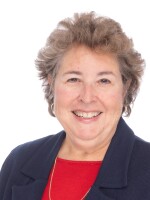It’s been more than 20 years since construction workers at Virginia Commonwealth University unearthed the remains of about fifty people in an old well near the Medical College of Virginia. Historians believe they were the bones of former slaves, whose bodies were stolen from local cemeteries for dissection by medical students.
When Michael Rao became president of Virginia Commonwealth in 2009, he recognized that the school’s failure to deal publicly with the remains of former slaves had upset African-American residents of Richmond – people like Anna Edwards and Janet Queen Nzinga Taylor.
"These residents of Richmond were stolen from their graves, their places of rest, and worked upon and then thrown away.”
"This is not just about bones found in a well. This is so much bigger than that. It’s about dignity and respect.”
Even now, VCU historian Ryan Smith says some African-Americans distrust the medical college, in part because stories have been passed down from one generation to the next – stories that cannot be confirmed.
"As a historian, I tend to favor the documents, and the actual physical artifacts a little bit more, but I heard a good bit about what people still remembered or were told about the 19th century and things that happened around MCV – and specifically people being snatched off the streets and killed to being brought in to be used as cadavers, and I wasn’t sure whether those were all kind of folklore that died out, but it was obviously still on people’s minds today in a way that I hadn’t anticipated.”
And studies of remains found in the well suggest that, at the very least, dead slaves became laboratory subjects. Quincy Byrdsong is Associate Vice President for Health Sciences at VCU.
"There’s actually physical evidence on the remains that shows expert scalping techniques but also novice dissection techniques, which gives us an indication that they were used in medical education.”
And, he says, other items found in the well suggest it was used as a place to dump trash.
"There were medical instruments found there, clothing, shoes, so it appeared that the well was used as a a waste repository.”
Faced with the evidence, University President Rao convened a series of public meetings to explore what should be done to make amends for what happened about 200 years ago. Don Edwards is CEO of Justice and Sustainability Associates – the company hired to organize community discussions.
"There’s really a need to construct an agreement about what gets done, and it should be informed by as many different voices and views and possible. At the very minimum, it helps Richmond to move beyond the past.”
More than a hundred volunteers came together on a Saturday morning at Martin Luther King Middle School to brainstorm. They came up with names of people who might serve as surrogate ancestors of those who were found in the well – people who could plan a ceremony, educational activities and a permanent memorial.





